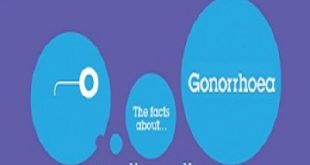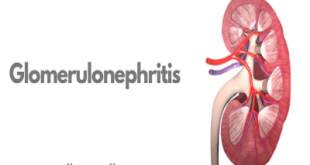Introduction
Gout is one of the most painful forms of arthritis. It occurs when too much uric acid builds up in the body. The buildup of uric acid can lead to:
- Sharp uric acid crystal deposits in joints, often in the big toe
- Deposits of uric acid (called tophi) that look like lumps under the skin
- Kidney stones from uric acid crystals in the kidneys
For many people, the first attack of gout occurs in the big toe. Often, the attack wakes a person from sleep. The toe is very sore, red, warm, and swollen.
Uric crystals at toe
Gout at finger joints
Gout at knee joint
Stages of gout
- Asymptomatic (without symptoms) hyperuricemia. In this stage, a person has elevated levels of uric acid in the blood (hyperuricemia), but no other symptoms. Treatment is usually not required.
- Acute gout or acute gouty arthritis. In this stage, hyperuricemia has caused the deposit of uric acid crystals in joint spaces. This leads to a sudden onset of intense pain and swelling in the joints, which also may be warm and very tender. An acute attack commonly occurs at night and can be triggered by stressful events, alcohol or drugs, or the presence of another illness. Attacks usually subside within 3 to 10 days, even without treatment, and the next attack may not occur for months or even years. Over time, however, attacks can last longer and occur more frequently.
- Interval or intercritical gout. This is the period between acute attacks. In this stage, a person does not have any symptoms.
- Chronic tophaceous gout. This is the most disabling stage of gout. It usually develops over a long period, such as 10 years. In this stage, the disease may have caused permanent damage to the affected joints and sometimes to the kidneys. With proper treatment, most people with gout do not progress to this advanced stage.
Ancient story behind gout
The history of gout goes back over 4,000 years. Gout is a very old, and distinguished, disease known to the ancient Egyptians, Greeks and Romans. The name of the disease, gout, from the Latin Gutta (drop) was first christened with a variety of additional names depending on where in the body the attack took place. Podagra, if it was the joint connecting the big toe to the foot; gonagra in the knees; chiagra in the hands.
Around 400 B.C. Hippocrates (466-377 B.C.), thought its cause was connected to the four humours (humors) which, if in balance in the body delivered health, and if out of balance delivered illness.
Claudius Galen, (129 – 199-217 AD), physician to five Roman Emperors in the 2nd century AD, believed in an annual bleeding to re-balance the out-of-balance humours that had or would develop as a consequence of over eating and drinking, or of too much sexual activity (if you were a man – they didn’t think women got gout until later in life, and generally that’s correct).
In 1859 Garrod, completed “The Nature and Treatment of Gout and Rheumatic Gout”. One of his ten propositions in this book stated firmly and clearly that the gout inflammation was caused by the deposited urate of soda (uric acid). Another, that an excess of uric acid (today we’d call it hyperuricemia) led to crystallisation and inflammation.
‘Martindale: the extra pharmacopoeia’, recommended X-rays, after their invention in 1895, alongside radium and radioactive waters, as a gout treatment in its 1915 and 1932 editions.
Non-steroidal anti-inflammatory drugs recommended for gout have included phenylbutazone (since the 1950s), indo-metacin (1960s), propionic acid deriv-atives, such as naproxen and piroxicam (1970s), and diclofenac (1980s).
In May 2008, febuxostat was the first new type of gout medicine in four decades to receive EU marketing authorisation. It works as a selective xanthine oxidase inhibitor, lowering the levels of uric acid in the body so that crystals cannot form.
Epidemiology
From 2007 to 2008 in the US, 3.9% of adults ≥ 20 years of age reported that a health professional or physician had told them that they had gout, as reported by the US National Health and Nutrition Examination Survey (NHANES), compared with 2.9% from 1988 to 1994.
The prevalence of gout increases with age in all countries; prevalence in men is significantly higher than it is in women, at a ratio of 3 to 4:1. Gout prevalence is lower in developing countries, from 1.7% in Indonesia; to 0.3% to 0.4% in Mexico, Cuba, and Venezuela; and < 0.5% in several Asian countries.
The incidence of gout worldwide is 0.3 to 6 cases per 1000 person-years. The incidence of gout is 2- to 6-fold higher in men than in women and generally increases with age, leveling off after 70 years.
What Causes Gout?
Gout is caused by the buildup of too much uric acid in the body. Uric acid comes from the breakdown of substances called purines. Purines are found in all of your body’s tissues. They are also in many foods, such as liver, dried beans and peas, and anchovies.
Normally, uric acid dissolves in the blood. It passes through the kidneys and out of the body in urine. But uric acid can build up in the blood when:
- The body increases the amount of uric acid it makes.
- The kidneys do not get rid of enough uric acid.
- A person eats too many foods high in purines.
When uric acid levels in the blood are high, it is called hyperuricemia. Most people with hyperuricemia do not develop gout. But if excess uric acid crystals form in the body, gout can develop. You are more likely to have gout if you:
- Have family members with the disease
- Are a man
- Are overweight
- Drink too much alcohol
- Eat too many foods rich in purines
- Have an enzyme defect that makes it hard for the body to break down purines
- Are exposed to lead in the environment
- Have had an organ transplant
- Use some medicines such as diuretics, aspirin, cyclosporine, or levodopa
- Take the vitamin niacin
Risk factors
Since gout is directly related to uric acid levels in the blood, risk factors are primarily associated with the production and excretion of uric acid in the body.
- Diet: Foods rich in purines, such as red meat, and certain seafood’s, such as oily fish, raise uric acid levels in the body since purines break down into uric acid. Alcoholic beverages such as beer and red wine in particular – are high in purines. Sugar – particularly fructose found in soft drinks – increases uric acid levels.
- High blood pressure: High blood pressure increases the risk of gout. Also, those who take diuretic medications to treat high blood pressure are at an increased risk. This is because diuretics taken to lower blood pressure, increase uric acid levels. Taking aspirin at low doses also increases uric acid levels.
- Obesity: People with high body weight are more likely to develop gout and at a younger age than those with lower body weight.
- Medication: Some medications block the excretion of uric acid in the kidney. In general, diuretics and medications that repress the immune system can increase risk of gout.
- Trauma: Gout can be brought on by surgery, heart attack or other physical and even emotional trauma.
- Kidney disease: Even mild kidney disease can result in reduced excretion of uric acid from the body.
- Heredity: If someone in your family has gout, you have a higher chance of developing the disease since gout does run in some families.
- Gender: Up until the age of 60, men are more likely to develop gout than women.
- Dehydration: Dehydration can contribute to gout attacks.
Symptoms generated during gout
- Gout typically has a sudden, abrupt onset with intense joint pain reaching its maximum over 6 to 12 hours. Symptoms seem to peak within the first day.
- Swelling and redness usually occurs, commonly in the first metatarsophalangeal joint (big toe).
- Any joint can be affected including the instep, ankle or knee.
- In an older person, gout may present atypically, with more insidious and less abrupt onset of pain, or with fever or delirium.
- Chronic gout can lead to the development of solid urate deposits (tophi) in connective tissues such as the upper extremity on the fingers, nodes over the olecranon bursa (bony tip of elbow) or ear. These tophi may ulcerate or get infected.
- Hard nodules form on the joint surface; and physical movement is painful and difficult.
Complications
- Tophi: Tophi can develop anywhere in the body, but usually form on the:
- Toes
- Heels
- Knees
- Fingers
- Ears
- Forearms
- Elbows
- Joint damage
- Kidney stones
- Psychological and emotional effects
How is gout diagnosed?
Gout can be difficult for doctors to diagnose because the symptoms may be non-specific and they often mimic other conditions such as joint infections. A doctor who suspects a joint infection will have to rule out infectious arthritis and establish a diagnosis of gout. As a result of this, it is important for doctors to carry out certain tests in order to be sure of the right course of treatment and correct diagnosis.
- Blood test – this test measures your levels of uric acid. It is not definitive as some people with high uric acid levels do not show gout symptoms while others who have gout symptoms do not have high levels of uric acid in their blood at the time of the attack.
- Joint fluid test – in some cases a needle may be used to collect synovial fluid from the affected joint. The liquid is then examined under a microscope to see whether urate crystals are present. This test is usually only carried out in hospital or special clinics.
- X-rays of joints – X-rays of the affected joints maybe be examined to identify deposits of urate crystals. X-rays show soft-tissue swelling and places where the bone has been eroded as thinning of the bone can occur.
Treatment
High blood levels of urate without symptoms (asymptomatic hyperuricaemia) should not be treated with medications. In general, management of gout should begin with reducing or eliminating factors contributing to high serum urate levels:
- Limit alcohol consumption
- Treat hyperlidipaemia
- Avoid diuretic therapy
- Losartan (Cozaar) has mild uricosuric properties and has been proven to decrease serum uric acid levels.
Acute treatment
The first goal is to treat the inflammation. It is important to commence treatment upon symptom onset as this reduces the duration and severity of attacks. Delayed commencement of appropriate medications may cause the resident distress and potentially lead to hospitalization.
Medications used to treat an acute attack of gout include NSAIDs, corticosteroids or colchicine. Most people will have complete resolution of symptoms within 5 days.
Colchicine
- Colchicine is used in acute attacks of gout. It reduces pain and the other clinical symptoms in patients. It has anti-inflammatory activity but no analgesic activity. Colchicine does not reduce plasma urate concentration or prevent joint damage.
- Colchicine should be only used as a second line therapy when NSAIDs or corticosteroids are contraindicated or ineffective. It can be used in conjunction with a NSAID.
- Colchicine should be avoided with grapefruit juice, erythromycin, cyclosporin, statins and calcium-channel blockers, including verapamil and diltiazem.
Allopurinol
- Allopurinol (Zyloprim, Progout) is the medication of choice for prevention of gout. Allopurinol should be commenced on a low dose which can be increased every few weeks to avoid a sudden drop in serum urate concentration, which can precipitate a gout attack.
- Up to 600 to 900mg daily may be necessary in some patients. Dose reduction is required when renal insufficiency is evident.
- Allopurinol should not be commenced during an acute attack of gout, as it may prolong the attack.
Febuxostat
- Febuxostat is a newer treatment for gout and works in the same way as allopurinol by lowering uric acid production.
- It is usually recommended to start febuxostat therapy after the gout flare has subsided.
- The recommended starting dose of febuxostat is 80mg once daily. Some patients may need a dose increase to 120mg depending on the changes in serum uric acid levels.
- Treatment with febuxostat is not recommended in patients with ischaemic heart disease or congestive heart failure; in patients in whom the rate of urate formation is greatly increased; in patients taking azathioprine/mercaptopurine; and in patients intolerant to lactose.
NSAIDs (Non-Steroidal Anti-Inflammatory Drugs)
- NSAIDs may be used during an acute attack of gout. They are effective to control the inflammation and decrease pain, but do not correct the hyperuricaemia.
- All NSAIDs including COX-2 selective inhibitors such as celecoxib (Celebrex) and meloxicam (Mobic) are equally effective.
- The most important issue is how soon the therapy is started rather than which NSAID is used. Treatment should be continued at least until the attack has settled and often for one further week.
- NSAIDs should be avoided in residents with poor renal function or chronic kidney disease, cardiovascular disease, and those at high risk of gastrointestinal bleeding (elderly patients, patients with peptic ulcer disease and those taking anticoagulants or corticosteroids).
- Patients already taking allopurinol should not stop the drug during an acute attack of gout.
Injecting uricase to break down uric acid
Reintroducing uricase, the enzyme lost in evolution, at first glance seems like a brilliant idea, but the problem is that our immune system never learned to tolerate it. Over time, we are bound to raise antibodies against it, in the best case making it ineffective, in the worst case producing more problems than we had before. So, it’s either for desperate situations or for short-term indications. Two forms are used:
- Pegloticase: recombinant porcine uricase with polyethylene glycol (PEG) modification for chronic tophaceous gout refractory to conventional treatments. Pegylation reduces immunogenicity and increases half-life of the enzyme from a few hours to almost two weeks.
- Rasburicase: recombinant uricase from Aspergillus flavus for lymphoma patients, to prevent gout attacks and acute uric acid nephropathy due to massive tumor cell lysis at the initiation of chemotherapy.
Surgery
Fortunately, surgery is rarely required for gout. Occasionally surgery must be considered for patients who have suffered from gout over a long period of time. It is used to remove particularly problematic tophi or to repair badly damaged joints. Generally, with proper medication and treatment, these severe situations are avoided.
Dietary Advice
- Dietary changes such as avoiding foods high in purine will only result in limited decrease in uric acid levels and may be difficult to maintain.
- Dieting and exercise may reduce serum urate concentrations. Adequate fluid intake of 2 litres per day is recommended especially in persons with a history of renal stones.
- A high intake of meat and seafood has been shown to increase the risk of gout.
Foods rich in vitamin C which reduces uric acid in the body
- Purine-rich vegetables (peas, beans, lentils, spinach, mushrooms, oatmeal, and cauliflower) do not appear to increase the risk.
- Men should reduce their alcohol intake, particularly beer which is high in purine. Wine is not considered a major risk factor.
- Regular consumption of coffee (4 or more cups per day) is associated with a decreased risk of gout.
Home remedies
Lemon Juice – Lemon juice possesses a high content of vitamin C. Other than that, it is alkaline and acidic in nature. All these properties of lemon juice enable it to effectively control the uric acid level and prevent it from going above the optimum level.
Apple Cider Vinegar – Apple cider vinegar is popular worldwide for its detoxifying abilities. However, a few people know that when it comes to neutralising the uric acid level, this natural remedy can do wonders. Alkaline properties of apple cider vinegar prevent the uric acid from getting accumulated in the system.
Baking Soda – Another home remedy that is enriched with alkaline properties is baking soda. It prevents a build-up of uric acid and, most importantly, it prevents the diseases caused by the high uric acid level.
Cherries – Since ancient times, this fruit has been consumed to naturally bring down the uric acid level. Cherries contain a particular type of a flavonoid that plays a huge role in regulating the level of uric acid.
Olive Oil – It is great for neutralizing the uric acid level. Studies claim that olive oil cuts down the excess amount of vitamin E present in the system, which can eventually lead to a high and potentially dangerous level of uric acid.
Avocado – One mineral that can do wonders to control the uric acid level is potassium.
Celery Seeds – Using celery seeds to control uric acid level is an age-old trick. Celery seeds are known to play a big role in keeping the uric acid level under control. You can include these medicinal seeds in your diet to reap the benefits.
Is gout curable?
It cannot be completely cured. But it can be prevented by administering medication which can prevent further attacks.
What you can do to avoid developing gout?
During symptom-free periods, these dietary guidelines may help protect against future gout attacks:
- Keep your fluid intake high. Stay well-hydrated, including plenty of water. Limit how many sweetened beverages you drink, especially those sweetened with high fructose corn syrup.
- Limit or avoid alcohol. Talk with your doctor about whether any amount or type of alcohol is safe for you. Recent evidence suggests that beer may be particularly likely to increase the risk of gout symptoms, especially in men.
- Get your protein from low-fat dairy products. Low-fat dairy products may actually have a protective effect against gout, so these are your best-bet protein sources.
- Limit your intake of meat, fish and poultry. A small amount may be tolerable, but pay close attention to what types — and how much — seem to cause problems for you.
- Maintain a desirable body weight. Choose portions that allow you to maintain a healthy weight. Losing weight may decrease uric acid levels in your body. But avoid fasting or rapid weight loss, since doing so may temporarily raise uric acid levels.
 Diseases Treatments Dictionary This is complete solution to read all diseases treatments Which covers Prevention, Causes, Symptoms, Medical Terms, Drugs, Prescription, Natural Remedies with cures and Treatments. Most of the common diseases were listed in names, split with categories.
Diseases Treatments Dictionary This is complete solution to read all diseases treatments Which covers Prevention, Causes, Symptoms, Medical Terms, Drugs, Prescription, Natural Remedies with cures and Treatments. Most of the common diseases were listed in names, split with categories.








nice information
Good teaching.
since past 30 years I have gout having severe pain I took pain killers like voveran, indomethacin n many others. now I’m taking fstat _40 mg per day. may I know doesn’t it effect kidney. plz advise.thanks
Please consult with a specialist to avoid serious side effects.
Thanx for the info. Reliable and resourceful. Handy and easy references. Help so much in managing my husband gout ailment.
my uric acid level is 8.0 & some time pain in my tow & i take colcholine from months…plz suggest my uric acid do not fall….Kindle suggest me..
Kindly follow some home remedies to recover from high uric acid levels in your body. Few home remedies are given in the post please find it out. Also get help from a doctor before taking home remedies.
Thanks for enlighthing me.
Why do I seem to have crystals under my skin? Some skin forms a red lump while others are like a white grain. Will these dissolve someday? Are they lodged in small capillaries? They are irritating! Dr. presc 100 mgs. Allopurinol for 90 days. Diet free from irritants, some meats, small amounts. Will start Apple vinegar.
please consult a doctor to get rid of this problem.
Please let me know the normal level of uric acid on blood test. Thanks
Normal Uric acid levels are 2.4-6.0 mg/dL (female) and 3.4-7.0 mg/dL (male).